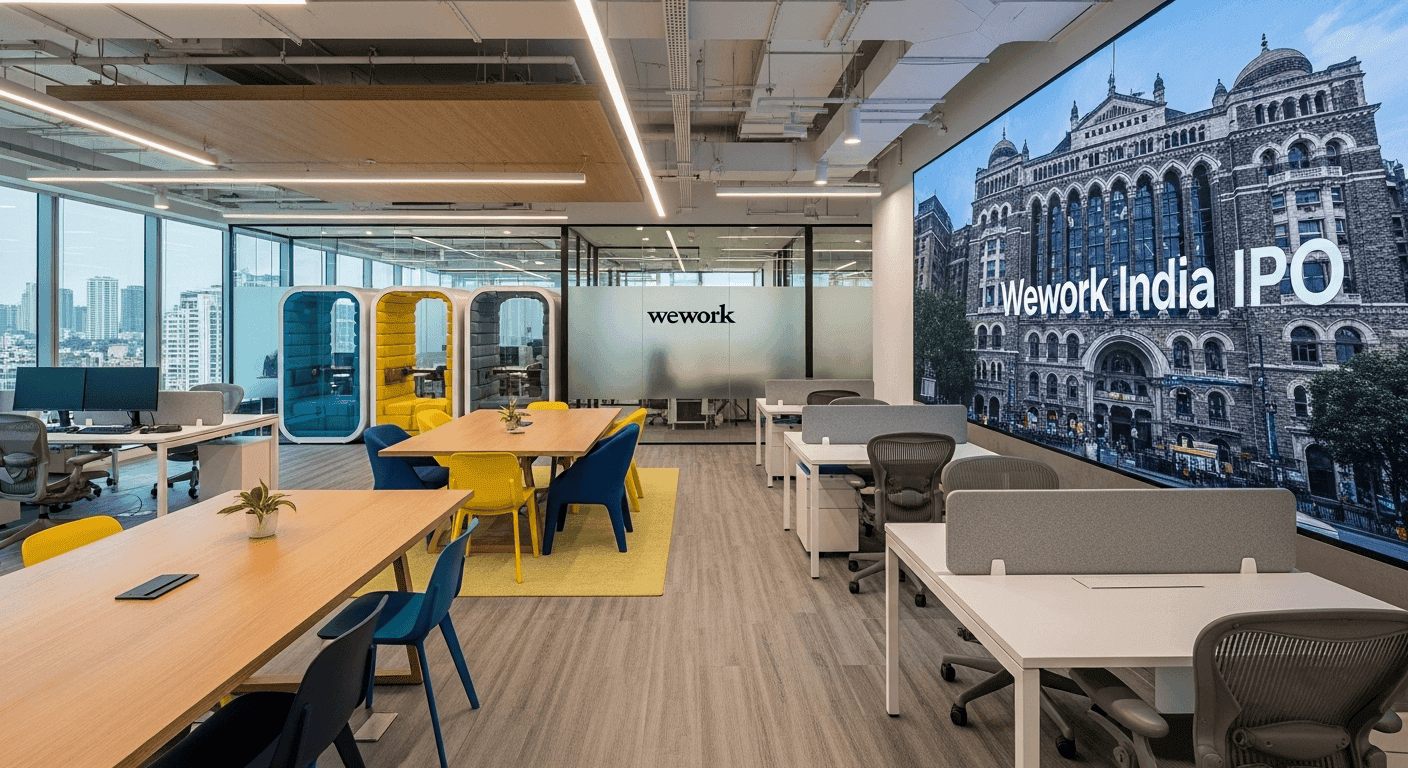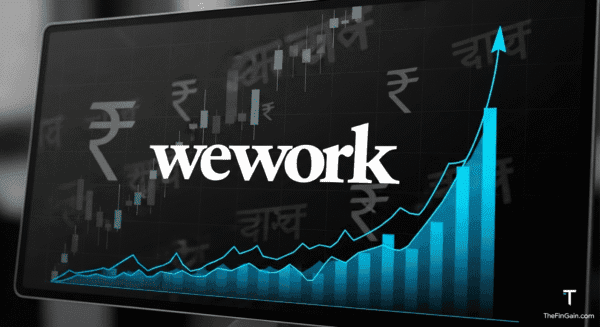Wework India IPO: 5 Ultimate Warnings Before You Invest in This High-Stakes Offer
The future of work is flexible, and no company embodies that shift quite like WeWork. After a dramatic global saga, its Indian counterpart, now known as WeWork India Management Ltd., is stepping into the public market spotlight with the Wework India IPO. For investors, this presents a tantalizing question: is this a chance to buy into the next big thing in Indian commercial real estate, or a risky bet on a company with a complicated past? The buzz is real, but so are the risks.
This isn’t just another public offering. It’s an opportunity to own a piece of India’s largest and most premium flexible workspace provider. The demand for coworking spaces is exploding, driven by startups, MNCs, and the hybrid work revolution. But before you jump in, it’s crucial to look past the hype. This deep-dive analysis will equip you with the essential information to make a smart decision.
Table of Contents
- What is WeWork India and How Did It Get Here?
- Dissecting the Wework India IPO: Key Offer Details
- The Financial Health Check: Is WeWork India Profitable?
- Competitive Battleground: WeWork India vs. Awfis and Others
- 5 Critical Warnings for Potential Investors
- The Final Verdict: Should You Subscribe to the Wework India IPO?
- Frequently Asked Questions
What is WeWork India and How Did It Get Here?
Launched in 2017, WeWork India is the exclusive licensee of the globally recognized “WeWork” brand in the country. It operates as the largest premium flexible workspace provider, boasting 68 centers and over 7.3 million square feet of space across eight major Indian cities. The company provides everything from a single desk for a freelancer to entire customized floors for multinational corporations, counting giants like Amazon, JP Morgan, and Uber among its clients.
Think of it like this: Instead of a company leasing an entire office for 5-10 years (a huge, inflexible cost), they can rent a fully-furnished, high-tech space from WeWork India on a monthly or yearly basis. This model offers incredible flexibility, which became even more valuable after the pandemic normalized hybrid and remote work.
The Indian entity is backed by the Embassy Group, a major real estate player in India, and has managed to carve out a distinct and successful path compared to its international counterpart’s well-publicized troubles. This IPO marks a pivotal moment for the company to unlock value and continue its growth trajectory.
Dissecting the Wework India IPO: Key Offer Details
Understanding the structure of an IPO is the first step in any analysis. Here are the crucial details for the WeWork India IPO:
- Issue Size: The company aims to raise ₹3,000 crore.
- Type of Issue: This is a 100% Offer for Sale (OFS). This is a critical point. An OFS means the money raised goes to the existing shareholders (the promoters, in this case, Embassy Group and WeWork Global) who are selling their shares, not to the company itself. The company will not receive any fresh capital from this IPO for expansion or debt reduction.
- Price Band: The price per share is set at ₹615 – ₹648.
- Lot Size: Retail investors must bid for a minimum of one lot, which consists of 23 shares, making the minimum investment ₹14,904 at the upper price band.
- Important Dates: The IPO is open for subscription from October 3 to October 7, 2025, with the stock expected to be listed on the BSE and NSE around October 10, 2025.
The Financial Health Check: Is WeWork India Profitable?
For years, the big question mark over the WeWork model globally was its profitability. However, the Indian arm presents a different story.
WeWork India has demonstrated a significant turnaround. The company’s revenue from operations has grown impressively, from ₹1,314 crore in FY23 to ₹1,949 crore in FY25. More importantly, it has swung from a loss of ₹147 crore in FY23 to a profit after tax (PAT) of ₹128 crore in FY25. This profitability, however, comes with a major caveat: it was largely aided by a deferred tax credit of ₹285.7 crore. Without this, the company would have remained in the red.
Despite this, its operational efficiency is improving. The company’s Adjusted EBITDA margin grew from 14.6% in FY23 to 21.6% in FY25, and its revenue-to-rent multiple (a key industry metric) of 2.7 exceeds the industry average. This indicates that they are getting better at converting their premium locations into profitable operations. For a deeper dive into their financials, investors can review their Draft Red Herring Prospectus (DRHP) filed with SEBI.
Competitive Battleground: WeWork India vs. Awfis and Others
WeWork India doesn’t operate in a vacuum. The Indian flexible workspace market is buzzing with competition, with nearly 500 operators across the country. Its most direct listed competitor is Awfis Space Solutions.
Here’s a quick comparison:
- Scale & Niche: WeWork positions itself as a premium operator in Grade-A buildings, focusing heavily on large enterprise clients (who make up about 60% of its tenants). Awfis has a wider reach with more centers, including in Tier 2 cities, catering to a broader market segment.
- Financials: While both are now profitable, WeWork India boasts higher margins and a stronger Return on Net Worth (RONW). This premium positioning appears to be translating into better financial efficiency.
- Valuation: At the upper price band, the Wework India IPO is valued at approximately 65-68 times its FY25 earnings. This is slightly higher than Awfis, which trades around 58 times its earnings. This premium valuation is a key point of consideration for investors.
The industry is projected to grow at a strong CAGR of over 21% until FY27, which is a powerful tailwind for all major players. More insights on market trends can be found in reports by industry experts like CBRE.
5 Critical Warnings for Potential Investors
Before subscribing, consider these potential red flags:
- Aggressive Valuation: With a P/E ratio of around 68x, WeWork India is demanding a premium valuation compared to its only listed peer, Awfis. Investors must question if this premium is justified by its brand and higher margins.
- It’s a 100% Offer for Sale (OFS): The company itself gets no money from the IPO. This means the funds aren’t being used for growth or paying down debt, which is often a primary motivator for companies going public. It’s purely an exit route for existing shareholders.
- Profitability Driven by Tax Credits: The headline profit figure for FY25 is significantly boosted by a deferred tax credit. While the underlying business is improving, its core pre-tax profitability is not yet as robust as it appears.
- High Lease Commitments: The business model relies on long-term leases for its properties, creating significant fixed costs. An economic downturn or a drop in occupancy rates could quickly put pressure on its finances.
- Pending Legal Proceedings: The company’s DRHP discloses pending legal proceedings against its promoter, and a show-cause notice from SEBI against a group company. While not directly involving WeWork India’s operations, such matters can create negative sentiment and regulatory overhang.
The Final Verdict: Should You Subscribe to the Wework India IPO?
The Wework India IPO is a classic case of high risk, high reward.
The Bull Case: You are investing in the market leader of a high-growth industry. The company has a premium brand, a strong enterprise client base, improving operational metrics, and has finally turned profitable. The “future of work” trend provides a massive, long-term tailwind. For a detailed industry outlook, resources from firms like JLL can be very insightful.
The Bear Case: The valuation is steep, and the fact that it is a complete Offer for Sale is a significant concern for new investors. The profitability is nuanced, and the business carries inherent risks tied to the cyclical nature of commercial real estate and high fixed costs. The tepid Grey Market Premium (GMP) also suggests muted initial interest.
Our Recommendation: This IPO is best suited for investors with a high-risk appetite and a long-term investment horizon. The premium valuation and OFS structure limit the potential for significant listing day gains. However, investors who believe in the long-term structural shift towards flexible workspaces in India and trust WeWork India’s ability to maintain its market leadership and improve profitability may consider subscribing. Cautious investors might be better off waiting to observe the company’s performance for a few quarters post-listing before making an entry.
Frequently Asked Questions
What does WeWork India do?
WeWork India is the country’s largest provider of premium flexible workspaces. It leases large office properties, designs and furnishes them, and then rents out desks, private offices, and custom spaces to individuals, startups, and large companies on flexible terms.
Is the WeWork India IPO a fresh issue or an Offer for Sale (OFS)?
The IPO is entirely an Offer for Sale (OFS), meaning the company will not receive any proceeds. The money will go to the selling shareholders, including the promoter Embassy Group and investor WeWork Global.
Is WeWork India profitable?
Yes, WeWork India reported a profit of ₹128 crore in FY25. However, this was significantly aided by a one-time deferred tax credit. Operationally, its pre-tax earnings are still under pressure.
What is the valuation of the WeWork India IPO?
At the upper price band of ₹648 per share, the company is valued at a Price-to-Earnings (P/E) multiple of approximately 68 times its FY25 earnings.
Who are the main competitors of WeWork India?
Its main listed competitor is Awfis Space Solutions. Other key players in the unlisted space include Smartworks, IndiQube, and several other regional and national operators.
#weworkindiaipo #ipo #stockmarket #coworking #investment
For more insights, visit TheFinGain.
The Science of Getting Rich: This Science will MAKE YOU Rich – Discover it today! 2023


